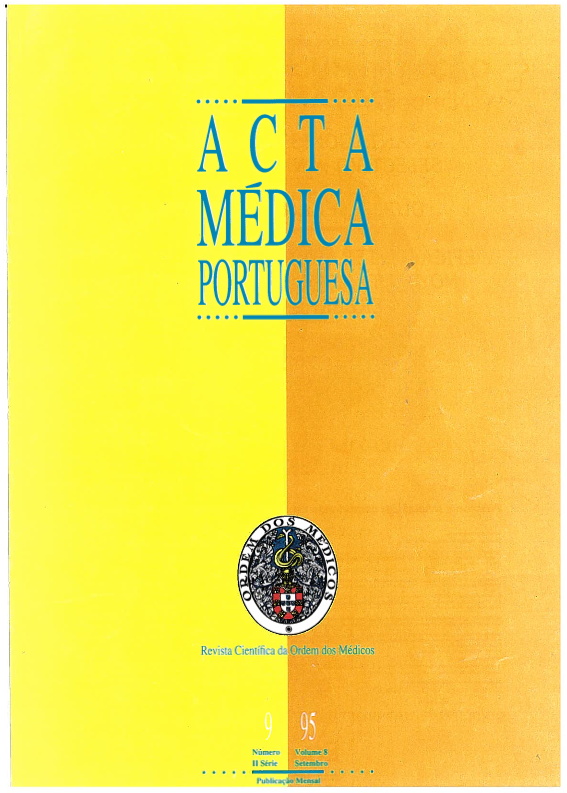The epidemiology of chronic venous insufficiency in Portugal.
DOI:
https://doi.org/10.20344/amp.2739Abstract
The prevalence of chronic venous insufficiency (CVI) was investigated in 44,777 unselected primary care outpatient clinics in 17 of the 20 districts in Portugal, during 1993. The diagnosis of CVI was established clinically by 427 participating general practitioners. CVI was more prevalent in females, with a female to male ratio of 2.1:1. The disease affects all age groups, but in females its prevalence increases sharply between 15 and 20 years, while in males it begins to become important about 10 years later. The maximum age-specific prevalence is reached between 55 and 64 years in both sexes, when CVI is present in 58% of females and in 35% of males. Overall prevalence of CVI was calculated using the data from the population census of 1991, by the direct standardization method. The estimated prevalence of CVI in males is 17.8% and in females is 34.1%, corresponding to 812 thousand and 1,741 thousand cases in Portugal, respectively. In the population over 15 years old, the prevalence is 20.7% in males and 40.8% in females. These estimates have an error of +/- 2.5% with 95% confidence. The geographical distribution of the disease showed different patterns in males and in females. Prevalence decreases from coast to inland in males, and from south to north in females.Downloads
Downloads
How to Cite
Issue
Section
License
All the articles published in the AMP are open access and comply with the requirements of funding agencies or academic institutions. The AMP is governed by the terms of the Creative Commons ‘Attribution – Non-Commercial Use - (CC-BY-NC)’ license, regarding the use by third parties.
It is the author’s responsibility to obtain approval for the reproduction of figures, tables, etc. from other publications.
Upon acceptance of an article for publication, the authors will be asked to complete the ICMJE “Copyright Liability and Copyright Sharing Statement “(http://www.actamedicaportuguesa.com/info/AMP-NormasPublicacao.pdf) and the “Declaration of Potential Conflicts of Interest” (http:// www.icmje.org/conflicts-of-interest). An e-mail will be sent to the corresponding author to acknowledge receipt of the manuscript.
After publication, the authors are authorised to make their articles available in repositories of their institutions of origin, as long as they always mention where they were published and according to the Creative Commons license.









